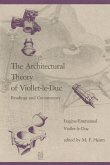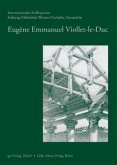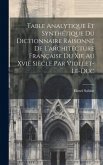An exploration of the role of graphic work in the career of one of the nineteenth century’s most influential architects Viollet-le-Duc (1814–1879) was nineteenth-century France’s most prominent architect and restorer. This groundbreaking study examines how he used drawing and printmaking as a mode of seeing and thinking and as a means to intensify relationships by capturing the vitality of historical worlds and hidden analogies between human culture and the natural realm. Making sense of Viollet-le-Duc’s vast graphic production, scholars consider his imaginative recreations of the most minute aspects of medieval warfare; his approach to the practical tasks of restoring very complex medieval monuments; his experiments in new means of publicly diffusing architectural ideas in the yearly Parisian salons, in didactic manuals, and in children’s books; and even a fantastic project to restitute the original structure of the formidable massif of Mont Blanc. The gamut of techniques employed by Viollet-le-Duc stretches from large painted tableaux to lithographs, steel engravings, woodcuts, gouaches, tracings, and full-scale details. This generously illustrated volume offers an unparalleled window into the architect’s working process and explores how his mastery of the graphic arts helped him harness the power of the press to disseminate architectural knowledge and spread ideologies based on antagonism, most notably nationalism and racism. Distributed for Bard Graduate Center Exhibition Schedule: Bard Graduate Center, New York (January 28–May 24, 2026)
Bitte wählen Sie Ihr Anliegen aus.
Rechnungen
Retourenschein anfordern
Bestellstatus
Storno








